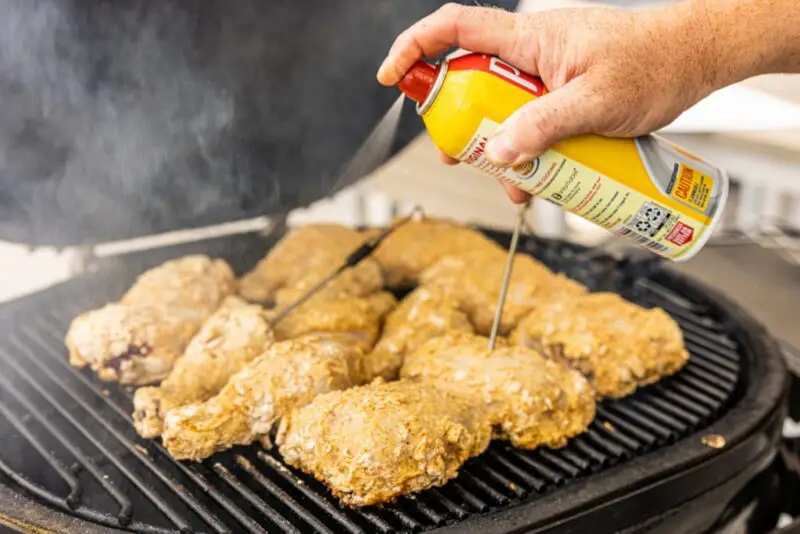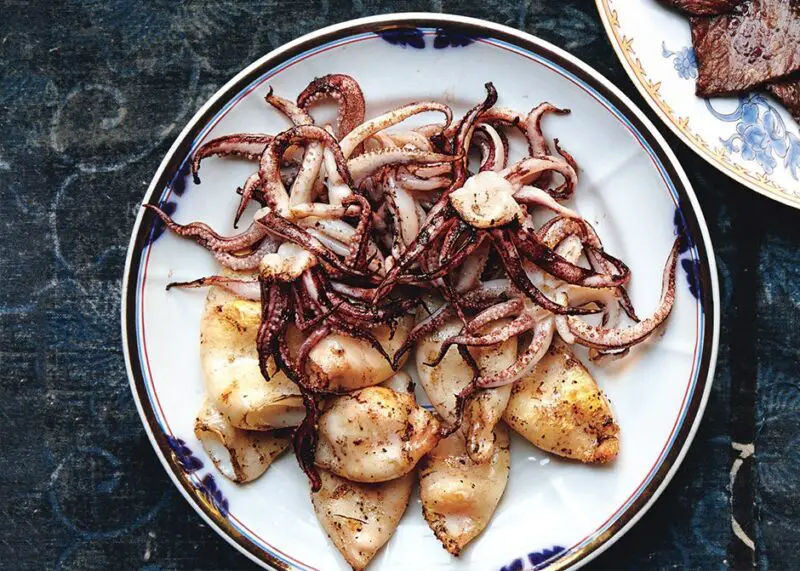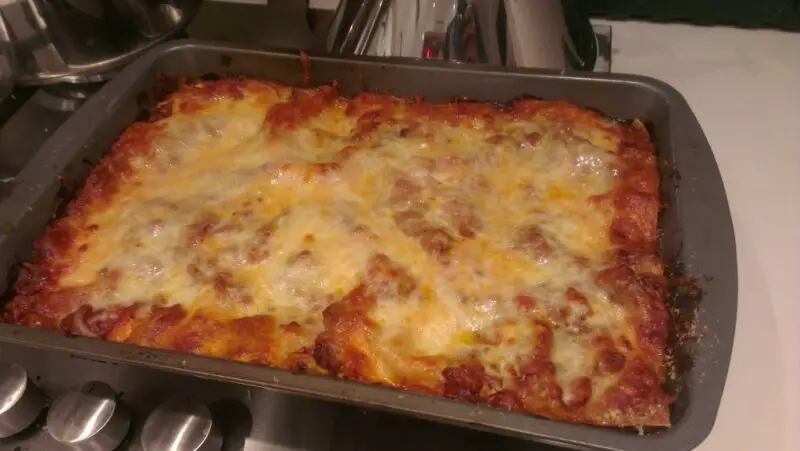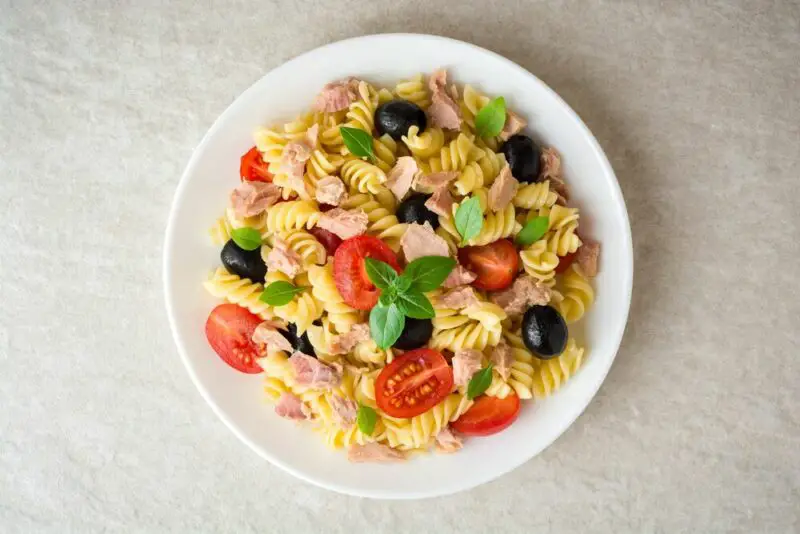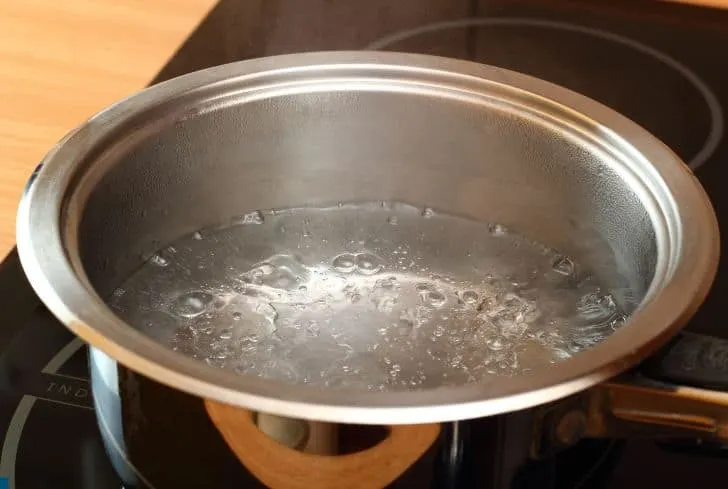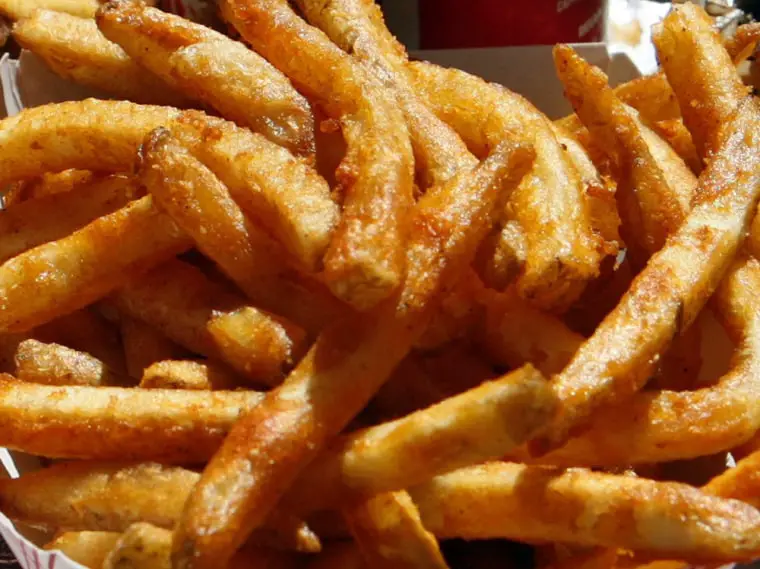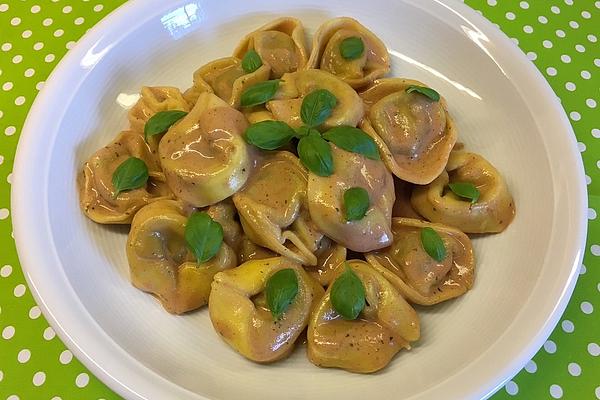Chicken is a versatile and healthy protein that can be prepared in endless ways. One common question home cooks have is whether you can use cooking spray to cook chicken instead of oil or other fats. The short answer is yes, you can cook chicken with cooking spray, but there are some important considerations to keep in mind.
What is Cooking Spray?
Cooking spray, also known as vegetable oil spray, is a handy kitchen tool that allows you to lightly coat pans and skillets with a thin layer of oil. The spray nozzle emits a fine mist of oil that distributes evenly over the cooking surface.
Cooking sprays are made from different types of oils including:
- Canola oil
- Olive oil
- Coconut oil
- Avocado oil
- Grapeseed oil
They may also contain small amounts of lecithin, a natural emulsifier that helps the oil spread more evenly. Some sprays also include flour or starch to help the oil adhere better to the pan.
When spraying pans and skillets, a very small amount of oil is used – usually just a few calories per spray. This makes cooking spray a lower calorie alternative to pouring or scooping oil to grease pans.
The propellants used in cooking sprays are food-grade gases like air, carbon dioxide or nitrogen. These propel the tiny droplets of oil out of the can.
Benefits of Using Cooking Spray
There are a few potential benefits to using cooking spray compared to greasing pans with oil or butter:
- Less oil/fat needed – Just a quick spray coats the pan instead of pouring in spoonfuls of oil. This can significantly cut down on the amount of fat used.
- Even coating – The fine mist from the spray nozzle coats surfaces more evenly than rubbing or brushing with oil.
- Easy to use – Spraying oil is faster and less messy than pouring and wiping oil around a pan.
- Versatile – Spray works on almost any cookware material from cast iron to non-stick pans.
- Flavorless – Cooking sprays have a neutral taste that doesn’t alter flavors like butter or olive oil might.
For these reasons, cooking spray can be a handy kitchen tool when you want to use just a small amount of oil.
Is it Safe to Cook Chicken with Cooking Spray?
Cooking spray is considered safe for most stovetop cooking purposes, including pan frying or baking chicken. However, there are a few precautions to take:
- Use Properly – Don’t spray directly onto food as some propellants like fluorocarbons can be unsafe when ingested. Always spray the pan surface instead.
- High Heat Caution – Cooking spray is not recommended for very high heat like broiling or grilling over an open flame. The oil can burn and generate potentially harmful compounds.
- Avoid Buildup – Overspraying can cause a sticky buildup of oil that is harder to clean. Wipe out excess oil after spraying pans.
- Check Smoke Point – Know the smoke point of the oil in the spray and don’t heat it beyond that temp. Unrefined coconut oils have lower smoke points.
As long as you follow basic safety tips, cooking spray is considered safe for stovetop chicken cooking by health organizations like the FDA and EFSA.
Does Chicken Cook Fully with Just Cooking Spray?
One common concern is whether chicken will brown and cook fully using just a light coating of cooking spray, without adding any extra oil.
The answer depends on a few factors:
Pan Material
- Non-stick pans – Chicken will brown nicely with just spray. The slick surface allows the meat to sear and cook through.
- Stainless steel – More oil may be needed to prevent sticking on stainless steel. Quickly spray then add a drizzle of oil for best results.
- Cast iron – Pre-seasoned cast iron provides an ideal non-stick surface for pan frying chicken with spray.
Thickness of Chicken
- Cutlets or tenders – Thin chicken cutlets or tenders will cook through very quickly with just spray.
- Boneless breasts or thighs – Use spray then add small amounts of oil to keep thicker boneless pieces from drying out.
- Whole legs or quarters – These thicker cuts need more oil to cook through without drying out. Don’t rely solely on spray.
Cooking Time and Temperature
- High heat – Cook chicken on medium high to high heat to promote browning and cook the outside before the inside dries out.
- Cook through – Ensure chicken reaches an internal temperature of 165°F. Check with a meat thermometer if needed.
With the right pan, thickness of chicken, and cooking technique, spray can work to cook chicken without any added oil. But for best results, consider combining spray with a small amount of oil.
Best Oils to Use with Cooking Spray for Chicken
While cooking spray does the job of lightly greasing the pan, you can mix in a little bit of oil to boost flavor and juiciness.
Here are some of the best oil options to use in conjunction with spray:
- Olive oil – Adds delicious rich flavor. The bold taste stands up well to chicken.
- Avocado oil – Has a high smoke point for pan frying and a neutral taste.
- Coconut oil – Provides a subtle tropical flair. Unrefined oil has a lower smoke point.
- Grapeseed oil – Another versatile neutral oil good for high heat cooking.
- Vegetable or canola oil – Bland oils don’t interfere with chicken’s flavor.
- Butter – Brings a scrumptious richness when melted with spray. Clarified butter has a higher smoke point.
For the healthiest option, use a light drizzle of olive, avocado or grapeseed oil with cooking spray.
Step by Step Guide to Cooking Chicken with Spray
Here is a simple start to finish walkthrough for cooking juicy, flavorful chicken using cooking spray:
1. Prepare the Chicken
- Cut – Trim off any excess fat and cut chicken breasts, thighs, legs or wings into even sized pieces for even cooking.
- Season – Season raw chicken as desired with salt, pepper, spices, herbs or marinades. Allow time to marinate if using a liquid mixture.
- Pat Dry – Pat chicken pieces with paper towels to remove any excess moisture for better browning.
2. Prepare the Pan
- Choose pan – Select a heavy stainless steel or cast iron skillet or saute pan. Non-stick works well too.
- Spray pan – Hold cooking spray 6 to 8 inches from pan and lightly coat it entirely.
- Add oil (optional) – Add just a teaspoon or two of oil like olive or avocado oil and spread around pan.
3. Cook the Chicken
- Preheat pan – Heat pan over medium high heat until very hot. The oil should shimmer.
- Add chicken – Carefully add chicken pieces skin side down if applicable. Work in batches to avoid crowding pan.
- Don’t move – Let chicken sit undisturbed until nicely browned, about 3-5 minutes. The browned bits = more flavor.
- Flip – Flip and cook other side 3-5 minutes until browned.
- Check temp – Check internal temp of chicken. Remove and set aside once it reaches minimum 165°F.
- Repeat – Cook remaining chicken in batches, respraying pan between each batch.
4. Finish and Serve
- Rest – Allow chicken to rest 5 minutes before serving. This allows juices to redistribute.
- Season – Sprinkle with any additional seasonings like fresh herbs.
- Sauce (optional) – Add any sauce or toppings as desired.
- Enjoy! – Chicken cooked with spray is ready to eat and enjoy!
The key is using the right amount of spray and oil for the pan and thickness of chicken. With a little trial and error, you can achieve perfectly cooked chicken using this convenient method.
Common Questions about Cooking Chicken with Spray
Here are answers to some frequently asked questions about using cooking spray to cook chicken:
Is cooking spray unhealthy?
Cooking spray contains very little fat and calories compared to pouring oil. Spray is considered one of the healthier ways to grease pans. However, don’t use excess amounts as buildup can lead to consumption of more oil than intended.
Does cooking spray add flavor?
Plain cooking sprays have a fairly neutral taste. They don’t impart much extra flavor. However, some organic sprays made with olive, coconut or avocado oil will lend a very subtle flavor. Butter-flavored spray and garlic spray will also impart more flavor.
Does cooking spray expire?
Like other oils, cooking spray has a shelf life and does eventually expire after 12-24 months. The can may swell or rust if the spray has gone bad. Stick to “best by” dates and store spray cans in a cool, dry place.
Is cooking spray flammable?
Cooking spray contains oils that can technically ignite and cause flare ups in very hot pans. Use caution when cooking over high heat and don’t spray near open flames. Grease fires can occur if spray over-accumulates on pans.
Does cooking spray ruin non-stick pans?
Light, proper use of cooking spray on non-stick pans is fine and won’t ruin the coating. However, excess buildup of oil over time can degrade the non-stick surface faster.
Tips for the Best Results Cooking Chicken with Spray
Follow these tips and tricks for foolproof, flavorful chicken made with the help of cooking spray:
- Pat chicken dry so the surface browns faster for a crispier crust.
- Allow pan and oil to preheat before adding chicken so it sears immediately.
- Use heavier pans like cast iron or stainless steel to mimic the heat of deep frying.
- Flip chicken just once during cooking for better browning.
- Spray in a sweeping motion – don’t concentrate spray in one spot.
- Add aromatics like garlic, herbs or onions to the pan for extra flavor.
- Combine spray with a small amount of olive, avocado or grapeseed oil for added taste.
- Avoid overcrowding the pan which steams instead of sears the chicken.
- Let chicken rest before slicing for juicier meat.
- Consider using a meat thermometer for perfect doneness, especially for thicker cuts.
- Add sauce ingredients like wine, lemon juice or broth to the pan for an easy pan sauce.
With the right techniques, cooking with spray truly does work for deliciously cooked chicken! Give this handy kitchen tool a try for your next chicken dinner.
Healthier Cooking Spray Substitutes
For those looking to cut back on oils or avoid chemical propellants, here are some alternative options to replace standard cooking spray:
- Water – For non-stick pans, water can work to quickly sauté or steam chicken.
- Broth or wine – Deglaze the pan with chicken broth or white wine for instant flavor.
- Lemons – Lemon juice provides acidity that helps chicken brown without much oil.
- Natural sprays – Some brands use air propellants and organic oils.
- Misto – This reusable gadget lets you fill it and dispense your own oils.
- Pan liners – Non-stick silicone liners help keep food from sticking.
With a combination of these tricks and good pan selection, it’s possible to use minimal amounts of added fat when cooking chicken.
Satisfying Chicken Recipes Using Cooking Spray
Here are some delicious chicken recipe ideas that use cooking spray for prep and cooking:
Pan Fried Chicken Cutlets with Lemon
Ultra crispy chicken breast cutlets pan-fried with spray and fresh lemon juice. A fast weeknight dinner!
Chicken Fajitas
Spice-rubbed chicken strips sautéed with onions and peppers then stuffed in warm tortillas.
Chicken Parmesan
Breaded chicken cutlets baked to crispy perfection with melty mozzarella cheese. Serve over pasta.
Rosemary Lemon Chicken
Boneless chicken thighs oven baked with fresh rosemary and lemon for a Greek inspired dish.
Homestyle Fried Chicken
Buttermilk soaked chicken pieces fried in cast iron with spray for crispy, juicy results.
Chicken Finger Basket
Kid-friendly breaded chicken fingers and fries. Quickly pan fry the chicken with spray.
Chicken Tacos
Shredded Mexican seasoned chicken served in small corn tortillas perfect for Taco Tuesday.
Chicken Stir Fry
Chicken strips stir fried with fresh veggies like broccoli, peppers and carrots for a fast meal.
BBQ Pulled Chicken
Shredded oven baked chicken tossed with your favorite BBQ sauce makes tasty sandwiches.
Buffalo Chicken Wings
Baked chicken wings coated in hot sauce and served with a creamy dipping sauce.
So put that can of cooking spray to good use with endless chicken dishes the whole family will love!
Conclusion
Cooking chicken with just a spritz of cooking spray instead of heavy amounts of oil is possible with the right techniques. Benefits like cutting calories and greasing pans quickly make spray a handy kitchen tool to have on hand.
Remember to choose well-seasoned pans, limit the thickness of chicken, and use medium-high to high heat for optimal browning and cooking through. Combining spray with a bit of added oil boosts flavor. With some trial and error, you’ll be able to cook juicy, delicious chicken using just spray.
Give this method a try for your next chicken dinner! From quick weeknight cutlets to crispy fried chicken, the versatility of cooking spray helps create healthier chicken meals that never compromise on taste.
